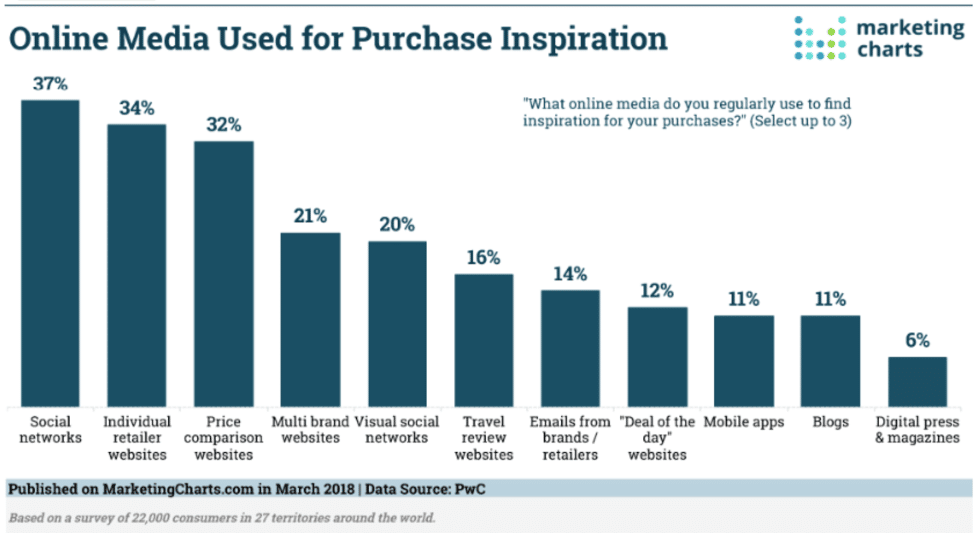From writing captions, to engaging profile bios, posting great pictures and videos, and more, social media comes with more than just getting likes as well as followers. Of course, at the beginning the vanity metrics might be what you care about most from an optics perspective. However, as you continue leveraging social media for driving site traffic, leads and sales, the game plan itself changes drastically.
No longer are you just looking to post content with the hopes of it going viral, but contextual relevance becomes a larger focus so that you are truly developing deeper and meaningful connections with your target audience.
It’s not about just reaching the masses but actually having a way to participate and engage in conversations that will positively impact your business. And the only way to truly make this happen is to ensure that you understand who you’re targeting along with the content they care most about consuming.
For example, your target audience might not exactly be on TikTok, but their friends or family might be. So if you’re able to push out the right type of content then the chances of that content getting back to ‘who’ you’re targeting will likely be higher than just trying to go viral.
Here are a few stats why social media is so powerful when used with a clear strategy in place:
- Answering a complaint on social media can increase customer advocacy by 25%. (Convince & Convert)
- 79% of consumers expect brands to respond within a day of reaching out over social media, but average brand response rates across all industries is lower than 25%. (Sprout Social)
- 73% of marketers believe that their efforts through social media marketing have been “somewhat effective” or “very effective” for their business. (Buffer)
- 54% of social browsers use social media to research products. (GlobalWebIndex)
- 54% of Gen Z and 49% of Millenials say social media is their preferred channel for ad influence. (Pitney Bowes)
- 79% of people say that user-generated content on social media significantly impacts their purchasing decisions. (Stackla)
1. Create a solid strategy
As I wrote in a previous post, when it comes to developing a successful social media marketing strategy, I like to approach it as I would an entire marketing strategy. To be more specific, you need to know exactly what you want to realistically achieve (with a timeframe attached), how success will be measured, and how it will impact your overall business objectives.
Start off by asking yourself how a solid social media strategy can play an integral role in helping you drive targeted traffic, leads, and sales to your website. The important part here is to make sure that you align social media goals with the overall business objectives. From there, you can lay out a specific and measurable game plan to hold yourself accountable.

Just as you would use SMART goals when it comes to the entire marketing plan, do the same with your social media strategy. Here’s an awesome example you can use by Hootsuite:
The S.M.A.R.T goal framework is all about creating relevant, achievable goals that help support your overall business objectives. The acronym stands for:
- Specific: Be clear. Does “increase engagement” mean you want 100 new followers or 1,000? Making your social media goals specific helps you track progress and measure success.
- Measurable: Every goal needs some kind of metric. “Improve customer service” is a great concept, but it’s not a goal unless you have a way to measure that improvement.
- Attainable: Your social media goals should absolutely require you to stretch, but they should be within reach if you put in the required work.
- Relevant: This is the piece that ties your goal-setting back to larger business objectives. If your goal involves increasing Facebook likes, for example, make sure you understand how that will benefit the business.
- Timely: Deadlines keep everyone accountable. Include a timeframe for completion of your goal so you know when to check in on your success. You might also want to include some milestones along the way for incremental check-ins.
2. Test as early and often as possible
The only sure way to know what type of content, images, and videos will actually drive the type of engagement you want is to test as early and often as possible. This is what makes social media so incredibly fun and easy with being able to see real-time analytics on what happens when you post certain content types.
Here are some easy things you can start testing now:
- Branded content regarding problems you solve.
- Trending topics in the media and having a voice of authority on each.
- Quick tips and how-to’s.
- Downloadable content tied to a targeted landing page.
- Free giveaways and contests that are centered around your expertise.
- Repurposing blog posts and making them more micro.
- Different CTAs and messaging.
- Develop themes for each week and keep up with the cadence.

3. Make time to have genuine convos
The whole point of using social media goes beyond just posting content you think your target audience will enjoy but actually engaging with them in a more authentic way. This means that you are actually commenting on other like-minded people’s posts, your replying to people who leave comments on your posts, you’re participating in relevant hashtags that you’re tracking, and so on.
On top of this, you can also take it an extra step up and start running Instagram Live sessions where you can invite your community to be a part of your presentations, talks, interviews, and even interact with you directly. A great example of this was when GaryVee started Tea with Gary at the start of the pandemic. He would pull in people from his community and just provide free advice on business.
This might feel time consuming but quite honestly, it will drive a ton more value to the people who follow you and who will eventually buy from you. Therefore, leading with value over just simply trying to sell is going to be a major win overall.
4. Don’t shy away from advertising
Whether you run a small business or larger one, you definitely need to take advantage of social ads. Organic reach has continued to decrease over the years, especially on platforms like Facebook and Instagram.
In order to really make sure your posts are being seen by the right audience and even taken action on (i.e. site traffic), then you should consider allocating some of your budget to social ads.

Here are key strategies to keep top of mind when running social ads:
- Make sure you align your spend with the overall social strategy and the results you want to see.
- Be as targeted as possible. Don’t spray and pray.
- Test as many different creatives as possible especially if you’re running ads specifically to get site traffic and generate leads or even sales.
- Make it easy to get in touch with you. Less friction that way.
- Optimize ads that are performing well.
- Keep track of major KPIs and metrics.
- Implement attribution tracking.
5. Tie everything together with analytics
I’ve said this over and over again but the marketers and even businesses that do best when it comes to truly driving business results with their digital efforts comes down to the setup of their analytics. This means you know exactly what’s triggering actions, what’s driving site traffic and why.
All of this is going to help you clearly see what’s working, what isn’t, and where you might need to make better improvements. Of course, not everything should be based on just data but once you start collecting it, there’s no reason you should use what you learn to make the right adjustments.
Wrapping it up
Remember that social media should be ‘social’ and not just focused on what you’re trying to sell. Push to bring value to your community and consistently get feedback from them so you can improve where needed alongside the data you collect.
Finally, make sure that testing continues to play an integral part of your overall strategy so that once you direct traffic to your website from social media, you’re able to figure out friction points and what actually moves people further down the funnel.





